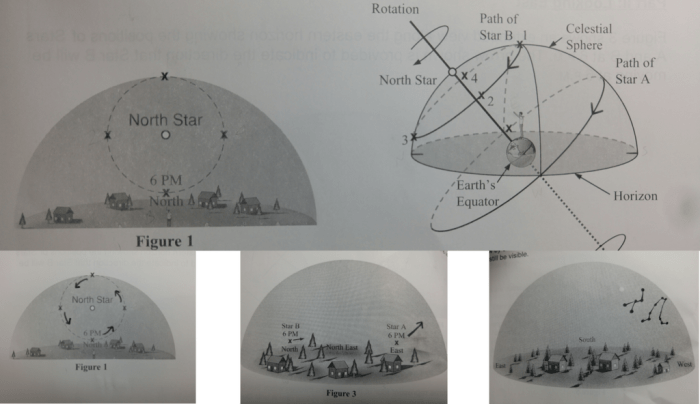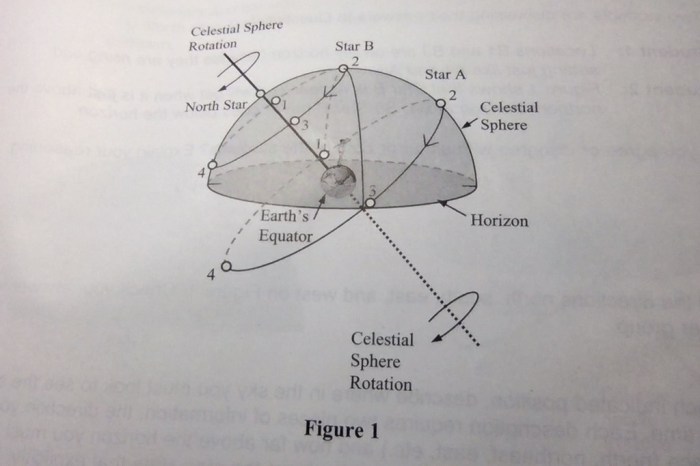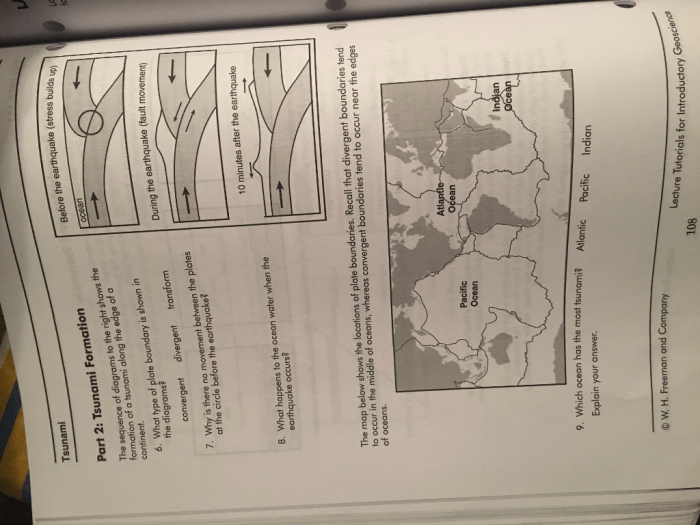Lecture tutorials for introductory geoscience answer key – Unveiling the intricate tapestry of our planet, “Lecture Tutorials for Introductory Geoscience: Answer Key” empowers students with a comprehensive guide to mastering the fundamental principles of Earth’s systems. This meticulously crafted resource provides a roadmap to unlocking the mysteries of geology, oceanography, meteorology, and astronomy, fostering a deep understanding of our dynamic planet.
Within these pages, aspiring geoscientists will embark on an immersive journey, exploring key concepts, delving into real-world applications, and honing their analytical skills. Through interactive exercises, engaging case studies, and expert insights, this answer key transforms lecture tutorials into transformative learning experiences.
1. Lecture Tutorials for Introductory Geoscience
Overview

Lecture tutorials are a type of instructional method that combines traditional lectures with small-group discussions and problem-solving exercises. They are designed to help students learn and retain information more effectively than through traditional lectures alone.
The purpose of lecture tutorials in introductory geoscience is to provide students with a deeper understanding of the fundamental concepts and principles of the discipline. They also help students develop critical thinking skills and problem-solving abilities.
Benefits of Lecture Tutorials
- Improved student learning and retention
- Development of critical thinking skills
- Enhanced problem-solving abilities
- Increased student engagement
- Improved classroom atmosphere
Examples of Successful Implementation
- At the University of California, Berkeley, lecture tutorials have been used to improve student learning in introductory geology courses.
- At the University of Arizona, lecture tutorials have been used to help students develop critical thinking skills in introductory environmental science courses.
- At the University of Texas at Austin, lecture tutorials have been used to enhance problem-solving abilities in introductory geophysics courses.
2. Key Concepts and Principles
Key Concepts
- Earth’s systems
- Plate tectonics
- Earth’s history
- Climate change
- Natural resources
Key Principles
- The Earth is a complex system that is constantly changing.
- Plate tectonics is the driving force behind many of the Earth’s surface features.
- The Earth’s history can be divided into four major eras: the Precambrian, the Paleozoic, the Mesozoic, and the Cenozoic.
- Climate change is a natural process that has occurred throughout the Earth’s history.
- Natural resources are essential for human survival, but they are also finite.
| Key Concept | Key Principle |
|---|---|
| Earth’s systems | The Earth is a complex system that is constantly changing. |
| Plate tectonics | Plate tectonics is the driving force behind many of the Earth’s surface features. |
| Earth’s history | The Earth’s history can be divided into four major eras: the Precambrian, the Paleozoic, the Mesozoic, and the Cenozoic. |
| Climate change | Climate change is a natural process that has occurred throughout the Earth’s history. |
| Natural resources | Natural resources are essential for human survival, but they are also finite. |
3. al Strategies

al Strategies, Lecture tutorials for introductory geoscience answer key
- Cooperative learning
- Peer instruction
- Problem-based learning
- Inquiry-based learning
Effectiveness of al Strategies
- Cooperative learning has been shown to improve student learning and retention.
- Peer instruction has been shown to be effective in developing critical thinking skills.
- Problem-based learning has been shown to enhance problem-solving abilities.
- Inquiry-based learning has been shown to increase student engagement.
Best Practices for al Strategies
- Create a positive and supportive learning environment.
- Provide students with clear instructions and expectations.
- Monitor student progress and provide feedback regularly.
- Reflect on your teaching and make adjustments as needed.
4. Assessment and Evaluation

Methods of Assessment and Evaluation
- Quizzes
- Exams
- Projects
- Presentations
- Portfolios
Challenges of Assessing Student Learning
- Ensuring that assessments are fair and valid
- Providing students with timely and meaningful feedback
- Balancing the need for assessment with the need for instruction
Effective Assessment and Evaluation Strategies
- Use a variety of assessment methods to measure student learning.
- Provide students with clear and specific feedback on their work.
- Use assessment data to inform your teaching.
- Reflect on your assessment practices and make adjustments as needed.
FAQs: Lecture Tutorials For Introductory Geoscience Answer Key
What is the purpose of “Lecture Tutorials for Introductory Geoscience: Answer Key”?
To provide a comprehensive guide for students, helping them master the key concepts and principles of introductory geoscience.
How can lecture tutorials enhance student learning?
They promote active engagement, foster critical thinking, and reinforce concepts through interactive exercises and real-world applications.
What are the key concepts covered in these lecture tutorials?
Topics include Earth’s structure, plate tectonics, the rock cycle, ocean currents, atmospheric circulation, and the solar system.
How are student learning outcomes assessed in these tutorials?
Through a combination of quizzes, problem-solving exercises, and reflective assignments.